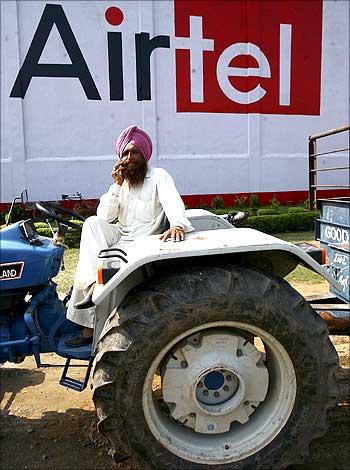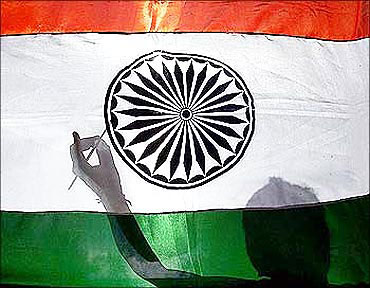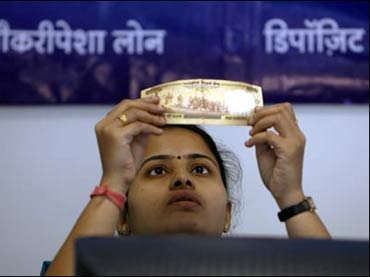 | « Back to article | Print this article |
What do market leaders do in a slowdown? Increase prices!
The price increases in certain sub-segments of direct to home (DTH) television, telecom and automobile sectors indicates demand continues to remain healthy.
Last month, the country's largest DTH company, Dish TV, and largest passenger vehicle maker, Maruti Suzuki, raised prices by one to six per cent. Telecom major Bharti Airtel has raised rates by 18-20 per cent in recent months.
All these are price-sensitive sectors, marked by fierce competition. Hitesh Shah, analyst at CARE Research, believes the increases were affected to protect margins.
"Despite the expectations of a slowdown, companies having an advantage in market share in some of the key sectors have recently increased their prices. This is not on account of an expectation of robust demand outlook, but rather a strategic call to protect margins and increase sustainability against future uncertainties."
Click NEXT to read on . . .
What do market leaders do in a slowdown? Increase prices!
In DTH, for example, after years of competitive pricing aimed at acquiring subscribers, there have been price increases. With DTH operators adding a million subscribers per month, a price rise will absorb cost pressures (set top box imports have turned costlier due to the rupee's depreciation), improve average revenue per user and help the sector maintain margins, say analysts.
Says Jehil Thakkar, sector head, media and entertainment, at KPMG, "A bit of pricing power has come back to the business and price hikes will help protect margins."
Consumers, as of now, are not complaining. Says Salil Kapoor, COO, Dish TV, "Demand is strong and the consumer is able to absorb the hike."
The price increase in the base pack is expected to help the company achieve average revenue per user (Arpu) per month of Rs 160-162 by the March 2012 quarter from the current 152. DTH companies will try to increase Arpu and margins by increasing the share of high-definition subscribers, which command an Arpu upwards of Rs 450.
Click NEXT to read on . . .
What do market leaders do in a slowdown? Increase prices!
In contrast, those for telecom companies have been on a continuous and rapid decline over the past couple of years, due to a price war. Despite a 20 per cent price rise by major players, demand has been steady. The rises, however, have not been uniform across circles. Market leader Bharti Airtel has raised fares only in the six circles where it is dominant.
Crisil Research says competitive intensity in the sector has peaked out and this is supported by moderating average revenue per minute (ARPM) declines of operators over recent quarters.
In fact, Bharti Airtel saw ARPMs for mobile services in India increase by one per cent sequentially, to 43.2 paise. An Airtel spokesperson says the declining price regime has stabilised and the curve is likely to move upwards. As in the DTH segment, firms are focusing on value added services to improve Arpu and margins.
Unlike stable demand in these sectors, the passenger vehicle space has not had a good year, due to the macro headwinds of higher fuel costs and interest rates impacting sales. Maruti Suzuki, the largest passenger vehicle maker, has seen its volumes fall 18 per cent year-on-year for the first 11 months of the year.
Click NEXT to read on . . .
What do market leaders do in a slowdown? Increase prices!
Despite the volume drop on account of labour unrest as well as weakening demand, Maruti has raised prices on diesel models by up to two per cent.
"The company went in for a calibrated price rise (three brands of 14 and in diesel versions) instead of across the portfolio, due to sluggish demand conditions," says its managing executive officer, marketing and sales, Mayank Pareek.
While it has put down the price rise to the increase in input costs and currency movement, the robust demand for diesel models could be another reason. Analysts say the September quarter was a bit unusual for Maruti due to labour unrest, currency fluctuations and input cost pressure.
Analysts say the demand for diesel vehicles has gone up in the small car segment after the launch of eight new models this year and due to the widening gap between diesel and petrol prices. This is likely to lead to the proportion of diesel car sales to total car sales (of industry) to rise from 27 per cent in 2010-11 to 32-34 per cent in 2011-12.
Higher demand is also leading to a shortage of diesel components, resulting in a longer waiting period. This provides flexibility to manufacturers to increase prices of such models, to offset higher input prices and higher selling cost, feels Crisil Research.




